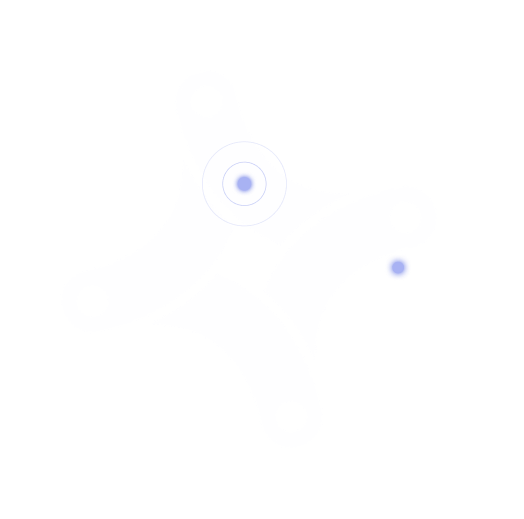Attack surface mapping enables a comprehensive overview of potential security weaknesses arising from devices, digital assets, and social engineering. Automated tools for attack surface mapping reduce the time spent on and human risks associated with the process.
Overview of Attack Surface Mapping
What is attack surface mapping?
Attack surface mapping identifies potential vulnerabilities that threat actors could use to gain unauthorized access to applications, networks, and systems. It enables security teams to gain visibility into the external and internal attack surface so they can anticipate phishing and social engineering attacks.
The attack surface mapping process typically includes:
- Creating an asset inventory: identifying and documenting all physical and digital assets
- Threat modeling: reviewing all identified physical and digital assets for ways that threat actors can exploit them
- Vulnerability assessment: reviewing all physical and digital assets for security weaknesses and identifying remediation activities
What are the components of an attack surface?
An organization’s attack surface consists of all entry points where unauthorized access could occur, including potential attack vectors and vulnerabilities. The key components of an attack surface are:
- Physical: devices, including desktop computers, laptops, and mobile phones, that store sensitive information, like user data or login credentials
- Digital: software, networks, data, websites, applications, databases, and any digital assets linked to the internet or internal network, including APIs, third-party resources, data storage, and code repositories
- Social: social engineering attacks, phishing attacks, malicious insiders misusing authorised access,
What are the techniques for attack surface mapping?
Manual and automated tools play a role in this process. Manual mapping finds and rates security gaps based on risk levels. Automated tools speed up the process and suggest ways to fix vulnerabilities.
Some examples of manual techniques include:
- Network analysis: reviewing network traffic data to understand normal behavior
- Open Source Intelligence (OSINT): collecting publicly available information collected from the clear web, deep web, and dark web
- Application profiling: analyzing applications’ structure, functionality, and potential vulnerability by examining their code, architecture, and behavior
Some examples of automated tools include:
- Continuous threat exposure management (CTEM): platforms that continuously monitor and analyze digital assets to identify vulnerabilities, assess risks, and prioritize remediation activities
- Dark web scraping: automated tools that extract valuable information from illicit threat actor communities and cybercriminal forums
- Extended detection and response (XDR) tools: endpoint monitoring and management solutions that leverage threat intelligence
Why is Attack Surface Mapping Important in Today’s Cybersecurity Landscape?
Why Is attack surface mapping important?
Attack surface mapping enables organizations to identify security weaknesses so they can target their security measures more effectively. By identifying specific areas to strengthen, they can prioritize activities more efficiently and enhance overall security. Additionally, attack surface mapping boosts incident response, making it easier to detect, react to, and recover from attacks. It also ensures compliance with regulatory and industry standards, meeting essential security obligations.
What are the challenges around external attack surface mapping?
External attack surface mapping involves identifying where an organization is vulnerable to attacks. However, many organizations face challenges like:
- Distributed IT ecosystems: IT environments spread across various locations can create data silos that create blindspots.
- Siloed teams: Different teams focusing on their assigned tasks may fail to share critical insights.
- Expanded attack surface: Cloud adoption creates risks arising from connected devices, applications, and servers that create new access points and security vulnerabilities, like misconfigurations or errors that attackers can exploit.
- Discovery: Maintaining a comprehensive asset inventory is time consuming and error prone as organizations add new technologies that connect to networks for a short period of time, like virtual machines or containers.
- Third-party threats: Third-party threats originate from external entities that an organization does business with, such as suppliers, vendors, or service providers.
How can attack surface mapping help reduce the attack surface?
Attack surface mapping minimizes the attack surface by identifying potential entry points for threat actors. It offers the following benefits that enable attack surface reduction:
- Comprehensive View: It offers a complete picture of an organization’s security posture, pinpointing critical assets that need protection.
- Prioritization: By highlighting areas of risk, security teams can prioritize investments and address the most vulnerable spots first.
- Continuous Monitoring: Regularly updated data ensures that security measures evolve to align with newly detected threats and risks.
- Automation: Automated tools streamline the identification of digital assets and vulnerabilities, reducing security gaps efficiently.
- Proactive Controls: Organizations can apply security controls to prevent unauthorized access before it becomes a threat.
Flare and Attack Surface Mapping
How does Flare’s platform answer attack surface mapping needs?
Flare addresses attack surface mapping needs by identifying public facing assets and monitoring the dark web to provide visibility into potential vulnerabilities. By using Flare to automate attack surface mapping, organizations can improve security across all potential attack vectors where malicious actors could gain unauthorized access.
How does Flare’s external attack surface tool focus on attack surface mapping?
Flare’s Continuous Threat Exposure Management (CTEM) solution provides continuous monitoring for critical digital assets across all external attack surfaces, including domains, usernames, and brand mentions. By discovering and prioritizing these risks, Flare enables organizations to expand their attack surface mapping to potential risks that security teams often consider outside their control.
What are the key benefits of using Flare for attack surface mapping?
Security teams can use Flare to achieve the following benefits:
- Real-time monitoring: ongoing awareness of external threat exposures by continuously discovering internet-facing assets for insights into vulnerabilities
- Comprehensive threat intelligence: scanning the clear, deep, and dark web as well as illicit Telegram channels to detect mentions of corporate names or assets that might indicate a targeted attack, infected device, or compromised credentials
- Data collection and transparency: access to billions of data points and insight into every source so security teams can focus on relevant threats and know where the insights came from
Attack Surface Mapping and Flare
The Flare Threat Exposure Management (TEM) solution empowers organizations to proactively detect, prioritize, and mitigate the types of exposures commonly exploited by threat actors. Our platform automatically scans the clear & dark web and prominent threat actor communities 24/7 to discover unknown events, prioritize risks, and deliver actionable intelligence you can use instantly to improve security.
Flare integrates into your security program in 30 minutes and often replaces several SaaS and open source tools. Learn more by signing up for our free trial.


